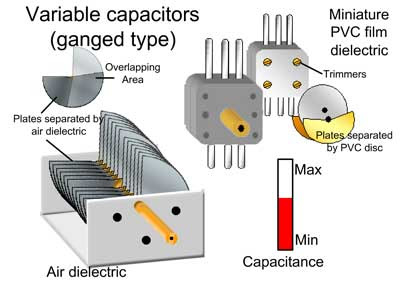Who Many Types Of Information Storage Devices?
A storage device designed to store information in computer. Storage devices work on different principles using electronics. magnetism and laser technology. There Types of Information storage devices are shown bellow.
- Primary Memory
- Secondary Memory
- Audio And Video Cassettes
- Magnetic Disks
- Hard Disk
- Compact Disk (CDs)
- Flash Driver
Primary Memory
It is based on electronics and consist of Integrated Circuits (ICs). It consist of two parts; Read Only Memory (ROM), which starts the computer and Random Access Memory (RAM), which is used in computer as temporary memory. RAM vanished when the computer is switched Off.Secondary Memory
The data storage devices are generally the secondary memory of the computer. It is used to store the data permanently in the computer. When we open program data is moved from the secondary storage into the primary storage. The secondary storage devices are audio - video cassettes and hard disk etc.
Audio And Video Cassettes
These devices are based on magnetism. Audio cassettes consist of a tape of magnetic material on which sound is recorded in a particular pattern of a magnetic field as shown in fig bellow. For the purpose, microphone changes sound waves in to electric pulses, which are amplified by the amplifier. Magnetic tape is moved across the head of audio cassettes recorded which is in fact an electromagnet.
Thus magnetic type is magnetized in a particular pattern according to raising or falls of current. In this way sound is stored in a specific magnetic pattern on this tape.
To produced the sound again, The tape is moved past the play back head. changes in the magnetic fields on the tape induce alternating current signals in the coil wound on the head. These signals are amplified and sent to the loud speakers which reproduced the recorded sound.
Magnetic Disks
There are different types of magnetic disks coated with the layer of some magnetic materials. The read or write head of disk are similar to the record replay head on a tape recorder. It magnetizes part of the surface to record information. The difference is that a disk is digital medium - binary number are written or read. A floppy disk is a small magnetite sensitive, flexible plastic wafer housed in a plastic case. It is costed with a cassettes and video tapes.
Floppies are inexpensive, convenient, and reliable, but they lack the storage capacity and drive speed for many large jobs. Data stored on floppy disks is also subjected to loss as a result of stray magnetic fields. As far as floppy disks are contacted, they are reliable only for short - term storage and cannot be used longer and no attempts should be made to save the data for a longer period. As the magnetic field weaken the data will also be lost.
Hard Disk
Most users are relay on the hard disk as there primary storage devices. A hard disk is a rigid, magnetically sensitive disk that spin rapidly and continuously in side the computer. chassis or in separate box connected to the computer housing. This type of hard disk is never removed by the user. A typical hard disk consist of several platters, each accessed via read or write head on a movable arm.
Compact Disc (CD's)
This is based on laser technology. It is a molded plastic disc on which digital data is stored in the form of microscopic reflecting and non reflecting spots which are called "Pits" and "Lands" retrospective. Pits are the spiral tracks encoded on the top surface of CD and land are the areas between pits. A fine laser beam scans the surface of the rotating disk to read the data.Pits and lands reflect different amount of the laser light failing on the surface of the CD. This pattern of different amounts of the light reflected by the pits and the lands is converted into binary data. The presence of pits indicates '1' and absence of pits indicates '0'.
A CD can store over 680 megabyte of computer data. A DVD, the same size as traditional CD, is able to store up-to 17 gigabits of data.
Flash Driver
It is also an electronic based device and consist of data storage ICs. A flash drive is a small storage device that can be used to transports files from one computer to another computer. Many of these devices carries your all homework for an entire Year! we can keep one on a key chain, carry it around our neck, or attached it to our book bag.
A flash drive is easy to use. One we have created a paper or other work we can simply plug our Flash drive into our USB port, We must make a backup of our created paper or project on our flash drive and save it separate fro our computer. A flash drive also come in handy if you are able to print out homework at school or Office.You can write a paper at home, save it to your flash drive and then plug the drive into a USB port on a school or office computer.


























